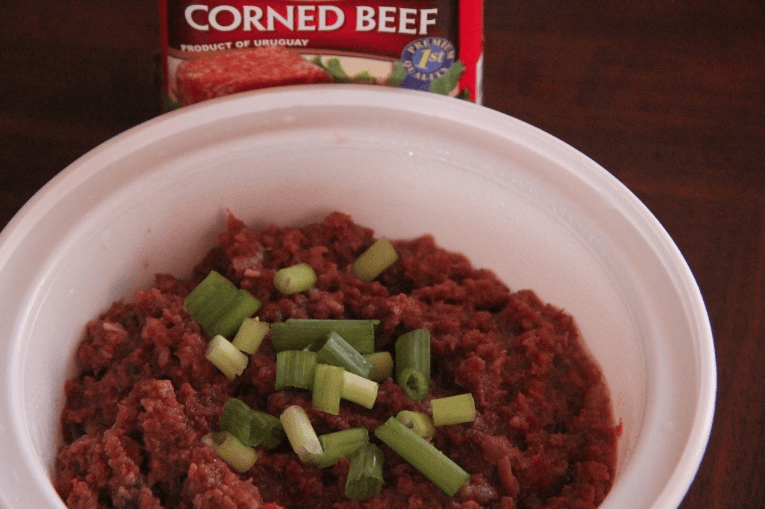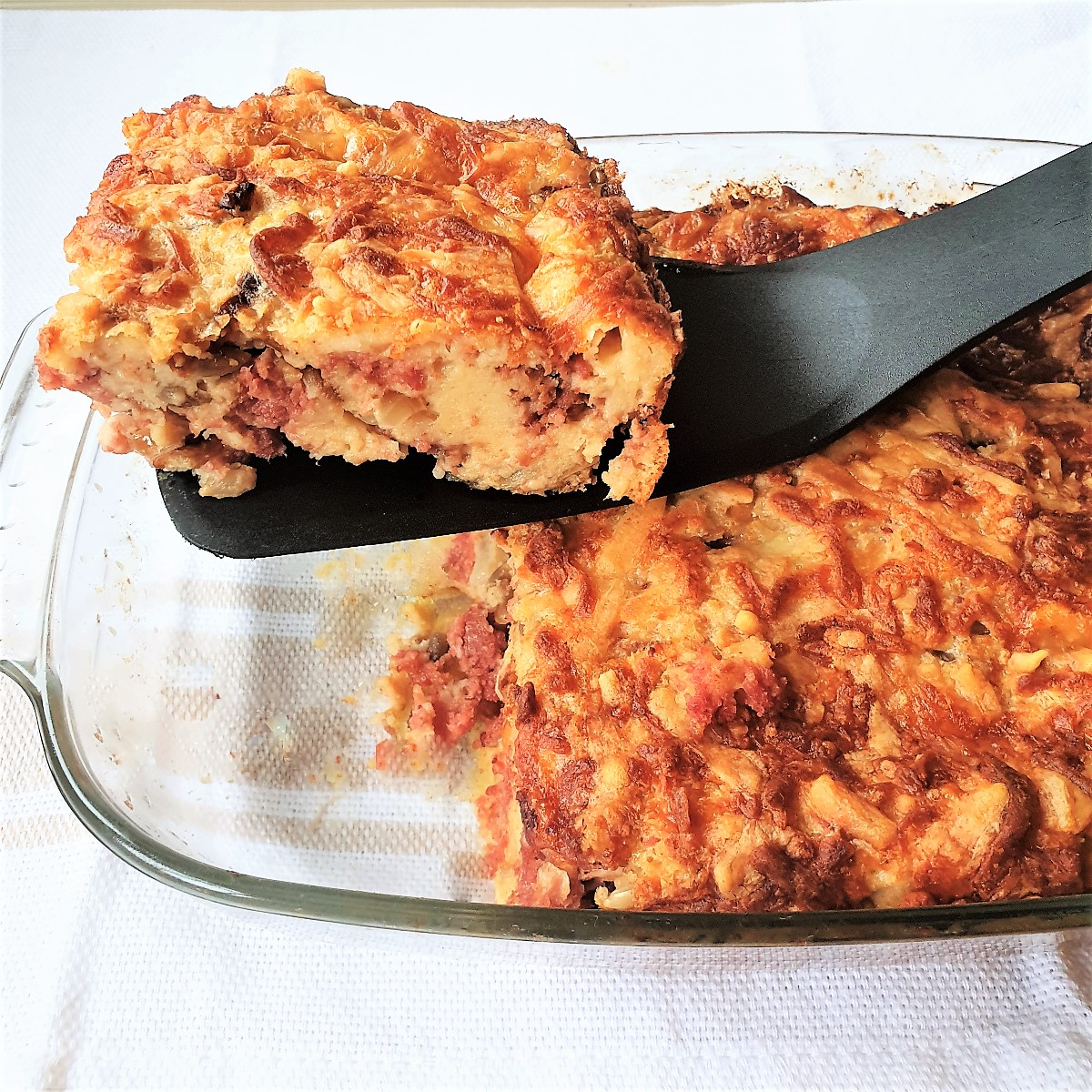Bully beef
corn beef, beouf bouilli
Bully beef is a variety of meat made from finely minced corned beef in a small amount of gelatin. The name "bully beef" likely comes from the French bouilli (meaning "boiled") in Napoleonic times, or possibly from the head of a bull depicted on the popular Hereford brand of canned corned beef. The cans have a distinctive oblong shape. Bully beef and hardtack biscuits were the main field rations of the British Army from the Boer War to the Second World War. It is commonly served sliced in a corned beef sandwich. Potato-based dishes, such as "hash and hotch-potch", in which the potatoes and beef are stewed together, and "corned beef hash", where pre-boiled potatoes and corned beef are mixed with Worcestershire sauce then fried, are also made. Tinned corned beef is also used in France. Some places where British troops were present in the 20th century (especially during World War II) such as Malta, have adopted bully beef as part of their national cuisine. In February 2009, the British Defence Equipment and Support announced that they would be phasing out bully beef from ration packs as part of the introduction of the new Multi-Climate Ration Packs until this change was reversed due to backlash. The dish soup and bouilli was being called "soup and bully" by 1753, and probably earlier, with the meat portion referred to as "bully beef". As use of canned soup and bouilli increased on merchant ships and in the Royal Navy over the 19th century, sailors were also calling it bully beef and extended the expression to all canned meats. This would include corned beef, as by 1862 "very good corned beef" – in the opinion of Lord Paget – had replaced "old mahogany" on naval ships.
Source: Wikipedia





